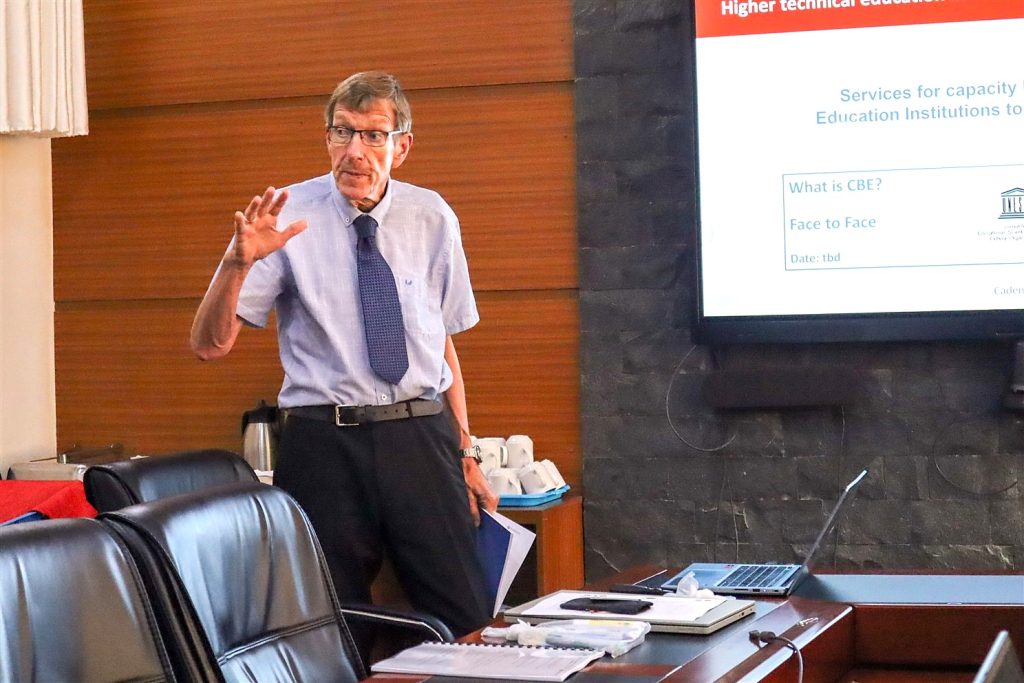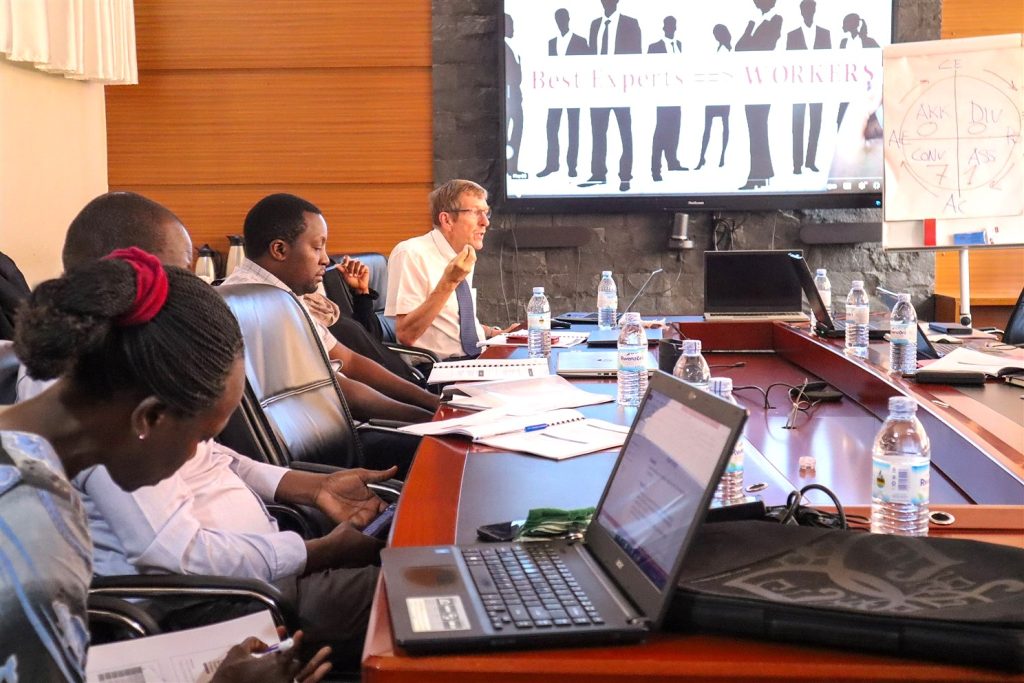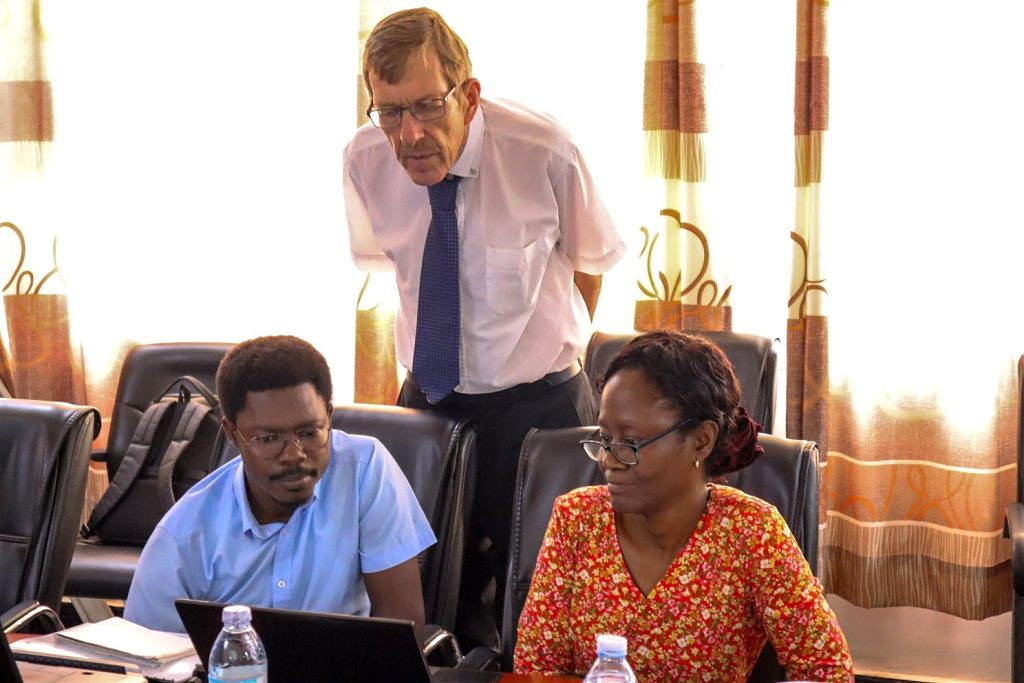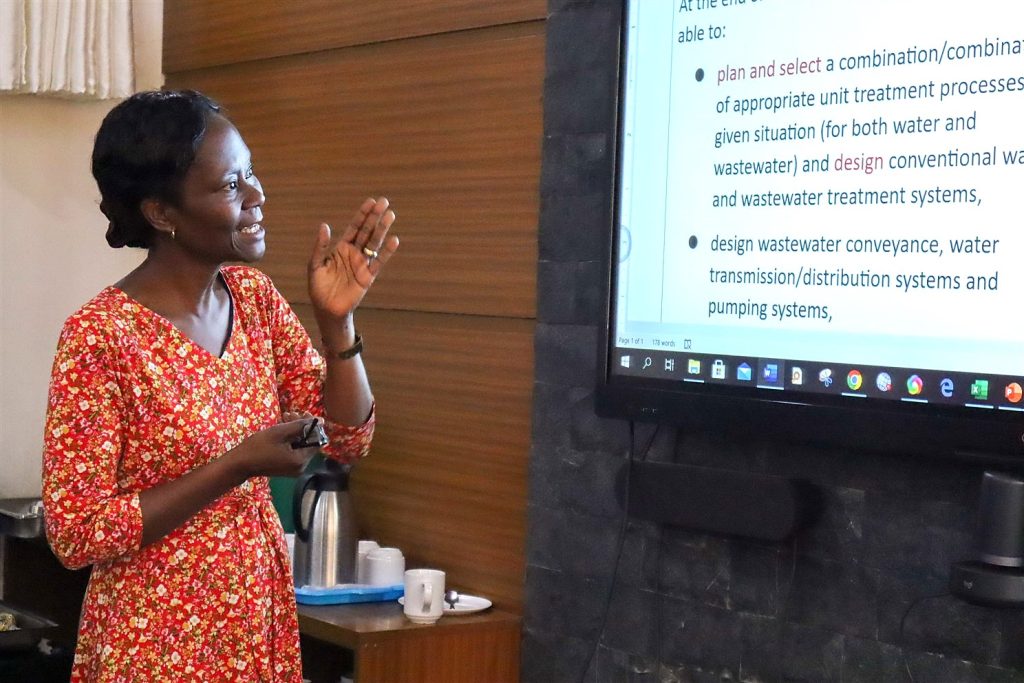By Kikomeko Pius
From 22nd to 23rd September 2025, a group of lecturers from Makerere University, School of Engineering participated in an intensive two-day training on Competence Based Education (CBE). This pivotal workshop was conducted by UNESCO in collaboration with China Funds In Trust (CFIT) as part of the UNESCO CFIT III project.
The training was facilitated by Mr. Klavs Christensen, a curriculum development expert from Cadena, an organization contracted by UNESCO for this initiative. This was Mr. Christensen’s second engagement with the School, following an initial assessment visit in July 2025 where he met with students, alumni and school leadership to evaluate the current curriculum.
Mr. Klavs began the session by sharing key findings from his July visit, which highlighted a significant disconnect between academic learning and industry expectations. Feedback gathered from students revealed a common concern which was that while they felt the theoretical concepts were taught very well, they lacked sufficient opportunities to apply this knowledge in practical settings while still in school.

This sentiment was strongly noted by industry partners who interact with recent graduates. Their most common observations included:
- Graduates often lack the necessary hands-on experience to perform day to day tasks.
- Students need more skills to effectively navigate the growing digital world.
- A noticeable lack of confidence is common among new graduates.
- There is a deficiency in critical soft skills such as good communication, critical thinking and the ability to work in a team.
These insights underscore the urgent need for an educational model that better prepares students for the realities of the workplace.
A central theme of the training revolved around the simple question: “What is Competence Based Education?”. Mr. Christensen explained that while the world of education and the world of work should be connected, they often are not in reality. CBE is the framework designed to build that bridge.
A key component of CBE is its emphasis on what a person can practically do at the workplace. The training defined competences in different ways, one being using the framework of Bloom’s Taxonomy as the measurable patterns of knowledge, skills, abilities and behaviours that an individual needs to successfully perform their work tasks.

Mr. Klavs emphasized that under the CBE standard, the industry must be the key party in determining the curriculum, not the university or the ministry. The logic is simple, since universities are preparing students for the industry, the industry should specify what skills and competencies are required. To achieve this, universities and the industry need to operate as a single, unified institution with two distinct obligations: academic education and labour market training. The success of CBE is therefore critically dependent on consistent employer involvement.
The training moved from theory to practice by introducing tangible methodologies that lecturers can implement like Kolb’s Learning Cycle which is a four-stage model, developed by David Kolb, and describes how knowledge is created through the transformation of experience. It involves a cycle of doing (Concrete Experience), watching and reflecting (Reflective Observation), thinking and forming new ideas (Abstract Conceptualization), and testing those ideas (Active Experimentation).

Mr. Klavs highlighted the use of case studies as an excellent stepping stone to full problem-based learning. In this method, students are presented with the context of a case, a specific problem or situation, and a task to solve. This approach is highly effective because it simultaneously trains students in technical skills, soft skills, and the application of knowledge. Furthermore, it connects directly to competency-based assessment, where students are evaluated on how well they can apply their learned skills to real-world situations.
The training was highly interactive, with Mr. Klavs engaging the engineering lecturers in numerous group activities and discussions. Participants were tasked with hands-on assignments, including:
- Developing their own case studies and presenting them to their colleagues.
- Discussing and listing the potential challenges of implementing CBE within their departments.
- Identifying their own preferred learning styles.

This hands-on approach ensured that the lecturers not only understood the principles of CBE but also began the practical work of applying them to their own teaching contexts. The commitment shown during these sessions is a testament to CEDAT’s dedication to providing a world-class education that prepares our students to excel as the engineers and innovators of tomorrow.
